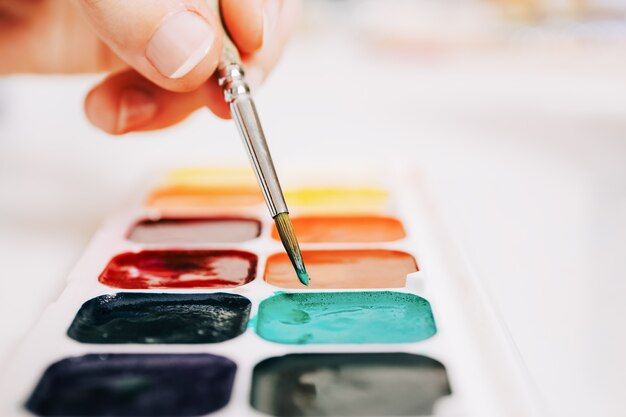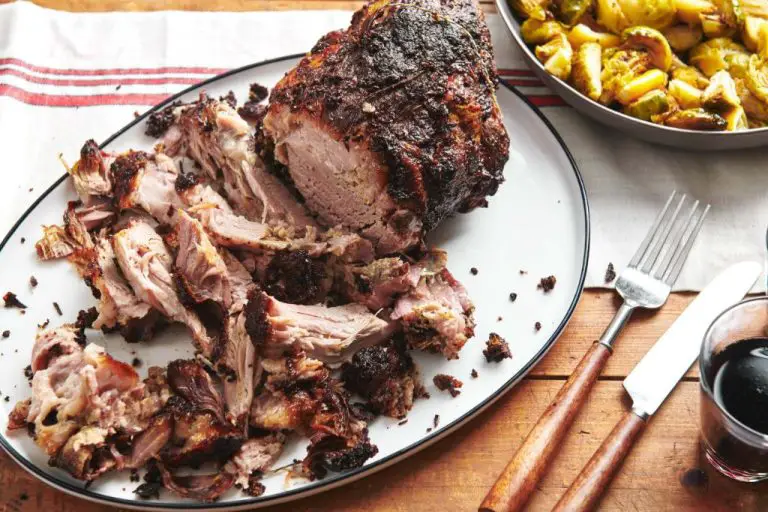Can I Paint Air Dry Clay Before It Dries?
Air dry clay, also known as modeling clay, is a versatile material often used for arts and crafts projects. It consists of a malleable clay that dries naturally and hardens at room temperature without the need for baking or firing in a kiln. Some common brands of air dry clay include Crayola Model Magic, Activa Air-Dry Clay, and Original Sculpey.
Air dry clay is popular for crafting figurines, jewelry, decorative items, and more. It provides an accessible modeling material that is lightweight, inexpensive, and easy to work with. Models made from air dry clay will dry hard and maintain their shape over time.
A common question that arises when working with air dry clay is whether you can paint it before it is fully dried and hardened. There are pros and cons to consider when painting air dry clay at different stages of the drying process. This article will provide tips and guidelines for successfully painting air dry clay.
Pros and Cons of Painting Air Dry Clay Before Drying
There are some advantages and disadvantages to consider when deciding whether to paint air dry clay before it has fully dried:
Pros:
Painting unset clay can help blending and mixing of colors directly on the surface. Working wet-on-wet allows colors to seamlessly merge and gradient between tones. It is also easier to fix mistakes by simply smoothing over unwanted paint. According to craftyourhappyplace.com, painting pliable clay means “the paint is more likely to soak into the clay rather than sit on top of it” creating a unified look.1
Cons:
There are some downsides to painting too soon. Wet clay can lead to smudging and fingerprints marring the surface. The painter needs to work relatively quickly before sections start to dry out. Painting wet clay also makes layering difficult since adding successive layers of paint or clay may ruin the work underneath. Letting clay fully cure provides a more stable painting surface.
Tips for Painting Un dried Air Dry Clay
When painting air dry clay before it fully dries, it’s important to take some precautions to ensure the paint adheres properly and doesn’t cause cracks or chips in the clay. Here are some tips:
Work in thin layers – Only apply light coats of paint at a time to prevent pooling or build up on the surface. Allow each layer to dry partially before adding more (https://craftyourhappyplace.com/air-dry-clay-painting/). Thin layers will dry faster and help prevent cracking.
Allow each layer to dry partially before adding more – After applying a light layer of paint, give it 5-10 minutes to dry before adding another layer. This will help the paint bind properly to the clay without compromising the sculpture (https://www.gathered.how/arts-crafts/art/pottery/how-to-paint-air-dry-clay).
Use acrylic paints – Acrylics work best for painting uncured clay as they adhere well and dry quickly. Avoid using oils or watercolors which can cause moisture issues (https://www.gathered.how/arts-crafts/art/pottery/how-to-paint-air-dry-clay).
Seal with varnish or glaze – Once the paint is fully dry, seal it with an acrylic spray varnish or glaze. This will protect the paint and give the piece a uniform finish.
Recommended Paints
When selecting paints for decorating air dry clay, there are a few popular options that work well:
Acrylic Paint
Acrylic paint is the most commonly recommended type of paint for air dry clay. Acrylics bond well to the clay surface and fully cure, allowing for a durable finished piece. Acrylics come in a wide range of colors and finishes, from matte to glossy, making them versatile for any project. Acrylics can be thinned with water, but many artists advise using the paint undiluted for maximum adhesion and vibrancy on clay. According to some clay artists, acrylic works great on unfired clay. Be sure to choose an acrylic formulated for crafting rather than fine art painting.
Watercolor
Watercolor paints can also work on air dry clay, providing a translucent, stained effect. Watercolors may not adhere as strongly compared to opaque paints, but they can create a soft, blended look. Use watercolors sparingly and do several thin layers rather than one thick coat. Let each layer fully dry before adding the next. Watercolors are best for accenting details rather than fully covering the clay surface.

Poster Paint
Poster paints are opaque, highly pigmented acrylics specially formulated for crafting. They provide excellent coverage on porous surfaces like clay. Poster paints are often sold in convenient squeeze bottles. Due to their thick consistency, they typically do not require sealing when used on air dry clay projects. Poster paints allow for bold, bright colors with a smooth finish.
How Long to Wait Before Painting
It’s recommended to wait at least 24 hours before painting air dry clay sculptures. This allows the clay adequate time to dry and harden to avoid issues with paint adherence. As noted by Craftyourhappyplace.com source, air dry clay typically takes around 2-3 days or 48-72 hours to fully cure. Painting before it has dried can cause the paint to chip, flake or rub off.
After the first coat of paint has fully dried on the air dry clay, usually within 24 hours, you can apply additional coats of paint without waiting. The initial wait time allows the clay to set up and properly absorb the first layer of paint. Once dried, the clay surface becomes receptive to additional paint, allowing successive coats to be added without issue.
Other Decorating Options
Although paint is the most common way to decorate air dry clay creations, there are many other fun options to consider:
Markers
Permanent markers in various colors can be used to draw designs onto dried air dry clay. Allow the clay to cure fully before using markers. Alcohol-based markers tend to work better than water-based ones. Test markers on a small area first to ensure they don’t smear.[1]
Glitter
Glitter glue, glitter paint, and loose glitter can all be applied to add sparkle. Use a sealant like varnish or glaze on top of glitter to help it adhere. Loose glitter applied before baking may fall off the piece.[2]
Collage
You can collage pieces of paper, fabric, photos, and more onto the surface of air dry clay. Use a decoupage medium or PVA glue to affix collage materials securely.[3] This creates an interesting mixed media effect.
Spray Paint
Once fully cured and sealed, air dry clay can be spray painted with acrylic paints. Spray paint allows blending of colors. Use light coats, allowing drying between applications. Provide proper ventilation when spray painting.[4]
Exploring different decorating methods beyond just painting expands the creative possibilities with air dry clay.
[1] https://www.susiebenes.com/blogs/airdryclayart/not-just-paint-why-you-should-prime-air-dry-clay-sculptures
[2] https://craftyourhappyplace.com/air-dry-clay-shiny/
[3] https://www.youtube.com/watch?v=poZt5pIX0F8
[4] https://makesomethingmondays.com/crafts/how-to-seal-air-dry-clay/
Sealing and Protecting Painted Pieces
It is very important to seal painted air dry clay pieces before using them or putting them on display. Sealing will protect the paint from chipping, fading, and wearing down over time. It also provides a protective barrier against moisture and helps the colors stay vibrant.
There are a few popular options for sealing painted air dry clay:
Polyurethane
A water-based polyurethane is one of the most common sealants used. It dries clear to provide a smooth, durable finish. Apply 2-3 thin coats with a brush, allowing each coat to fully dry in between. Polyurethane has good durability and scratch resistance. See gathered.how for tips on using polyurethane to seal air dry clay.
Glaze
An acrylic glaze or varnish can also be used to seal painted clay. Choose one formulated for ceramics or clay. Brush on 1-2 coats, letting the glaze dry completely between coats. The glaze helps protect the paint and gives an attractive glossy finish.
Varnish
An acrylic varnish provides a durable, clear finish that helps protect painted clay creations. Make sure to choose an archival quality varnish meant for art mediums. Apply 2-3 thin coats with a soft brush, allowing drying time between coats.
Storing Painted Air Dry Clay Creations
Proper storage is key to keeping your painted air dry clay creations in good condition. Here are some tips:
Store pieces in a cool, dry area to prevent moisture damage. Avoid damp basements, garages or any area with high humidity. Moisture can cause paint to soften, run or peel.[1]
Keep creations covered or in a closed container to protect from dust. Dust can dull paint finishes over time.
Do not display pieces in direct sunlight as this can cause fading. Find an indoor area away from windows for display.[2]
Handle painted clay gently to avoid chipping or peeling. Use padding when stacking multiple pieces.
Consider sealing pieces with a clear acrylic sealer for extra protection if they will be handled frequently. Test sealer on an inconspicuous area first.
Store unsealed pieces away from plastic bags or wrap which may interact with uncured paint. Use acid-free tissue or foam for storage.
Follow any specific storage instructions from the paint manufacturer. Some paints may require refrigeration after opening.
Troubleshooting Painting Issues
When painting air dry clay, you may encounter some frustrating issues like smudges, poor adhesion, and bubbles in the paint. Here are some tips for troubleshooting common painting problems:
To fix smudges and fingerprints, gently sand the surface with fine grit sandpaper before painting. This will remove any oils from your hands that could prevent the paint from properly adhering. You can also use isopropyl alcohol on a cotton swab to clean the area thoroughly.
If acrylic or water-based paints aren’t sticking well, the clay likely wasn’t fully cured before painting. Allow the air dry clay to dry for the recommended time, then lightly sand and wipe with alcohol before painting again. Using a paint primer like gesso can also help the paint adhere better.
To prevent bubbles, avoid over-brushing which can cause air pockets in the paint. Gently stroke the paint on without vigor. If bubbles do occur, wait for the paint to fully dry and then sand them away before applying another coat.
Check that the paint and clay brands you are using are compatible. Some paints interact poorly with sulfur in certain clays. Switching to an acrylic paint may solve the issue if the paint won’t adhere properly.
Conclusion
Painting air dry clay before it fully dries has both advantages and disadvantages. The main benefit is that you can start decorating your creation right away, without having to wait for it to fully cure. The paint is also absorbed better on damp clay. However, the downside is that any moisture trapped under the paint may cause cracking or peeling issues once the piece dries. Overall, there are creative possibilities in both painting undried and fully dried air dry clay. When painted before drying, the colors blend and mix in interesting ways as the clay continues to cure. Once dry, the surface acts more like canvas and accepts acrylics especially well. With smart planning and proper sealing, air dry clay makes a fun, lightweight and durable material for homemade painted crafts and figurines.


